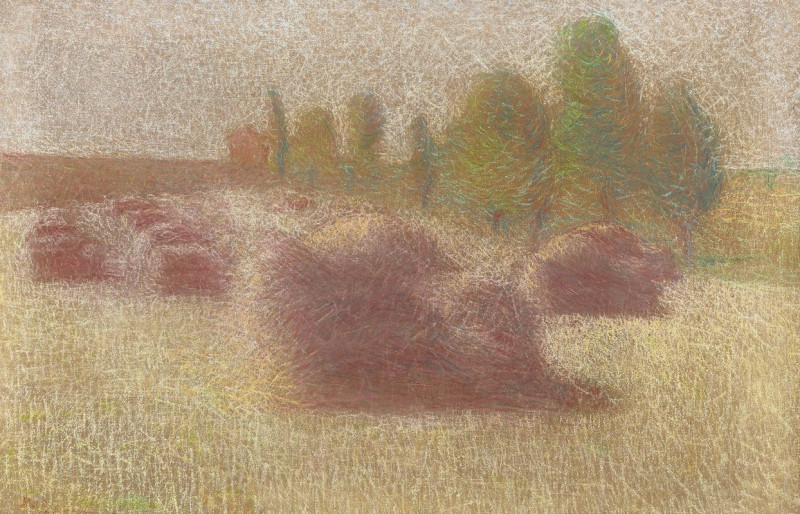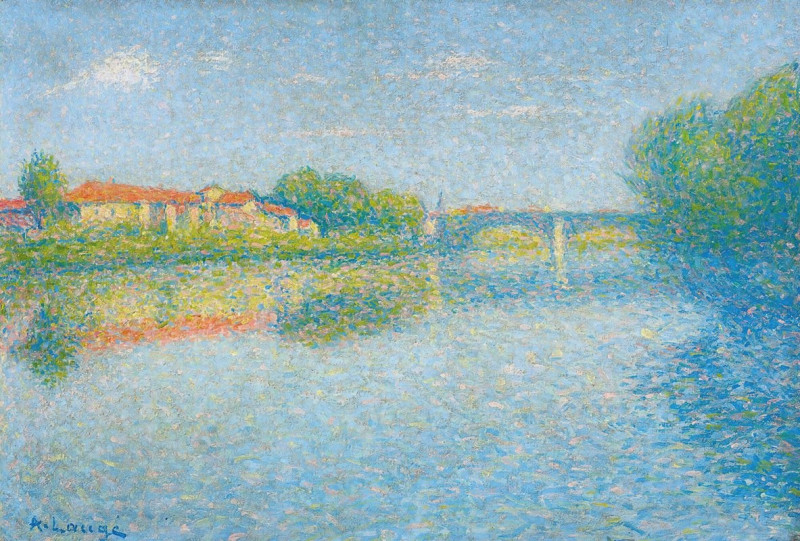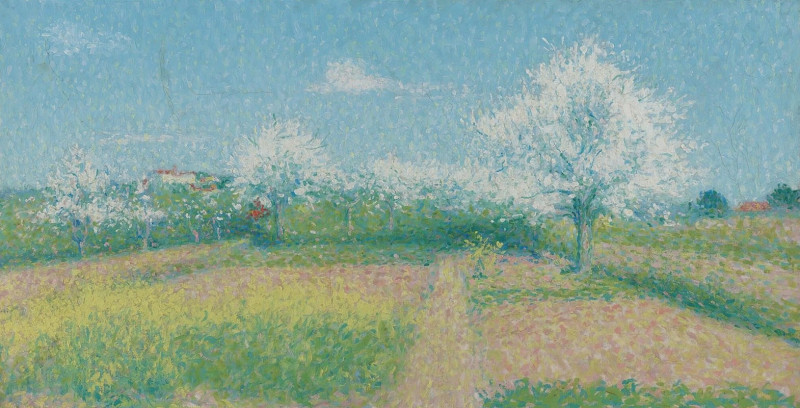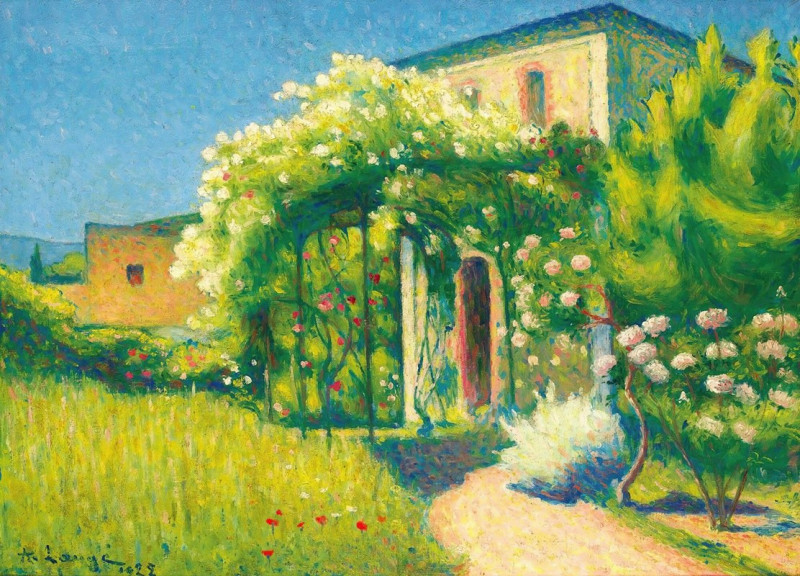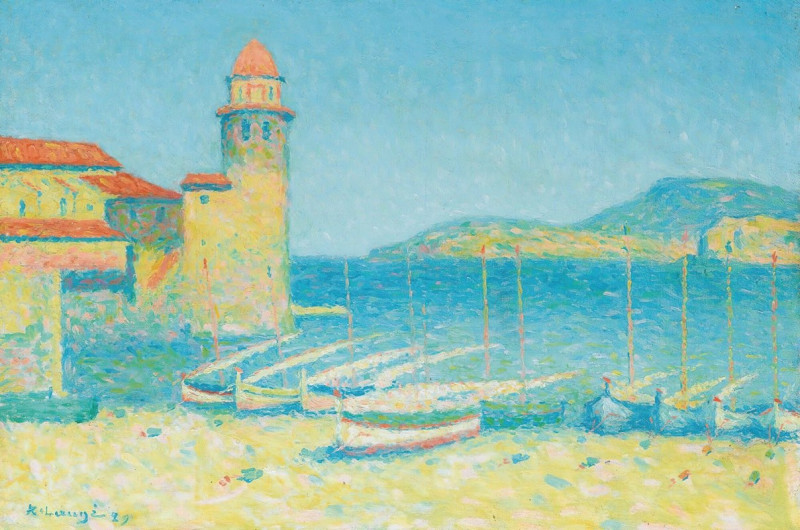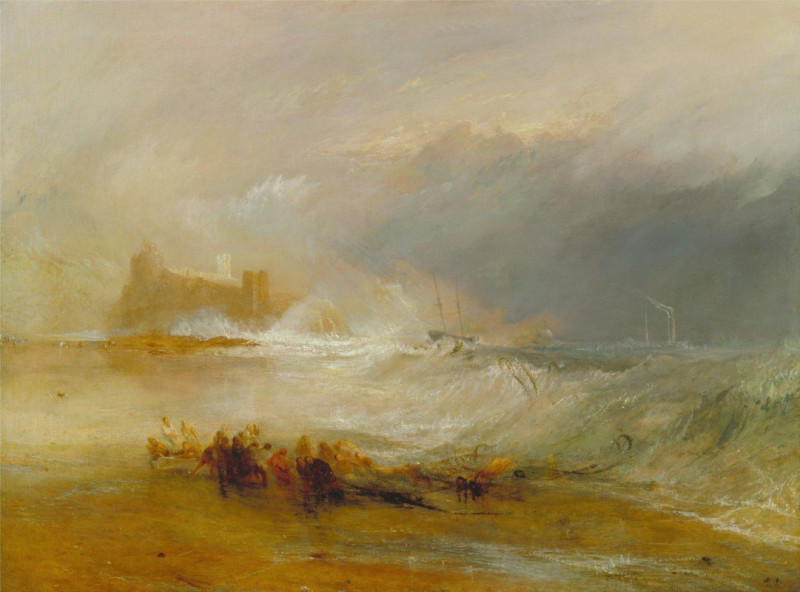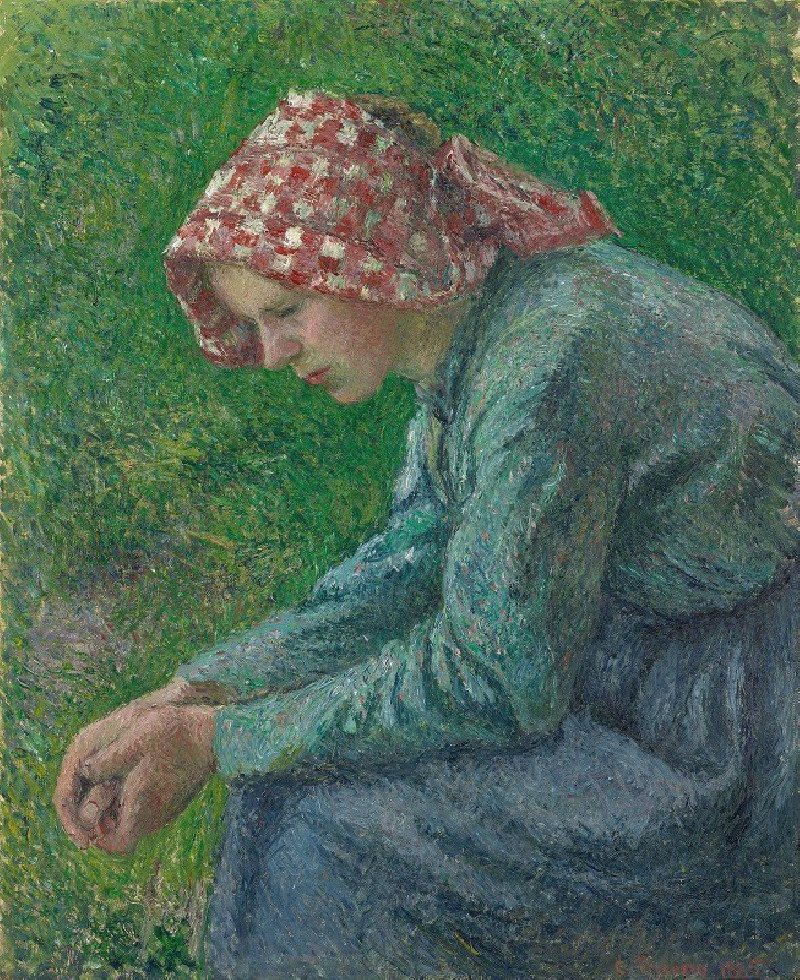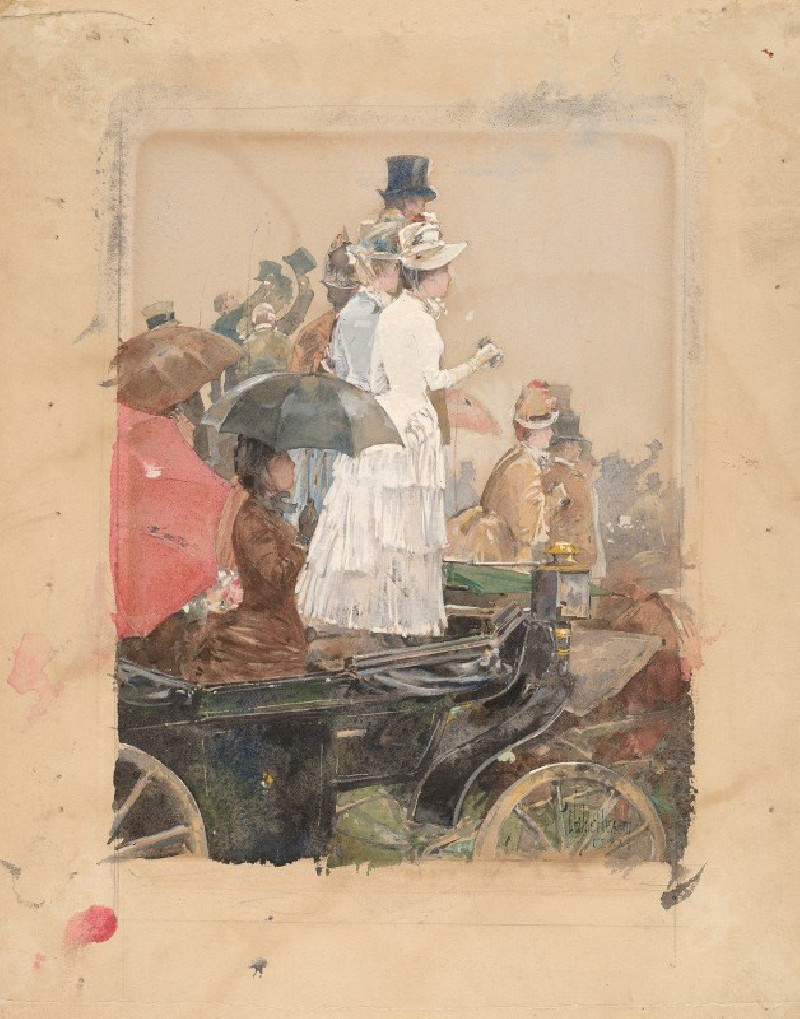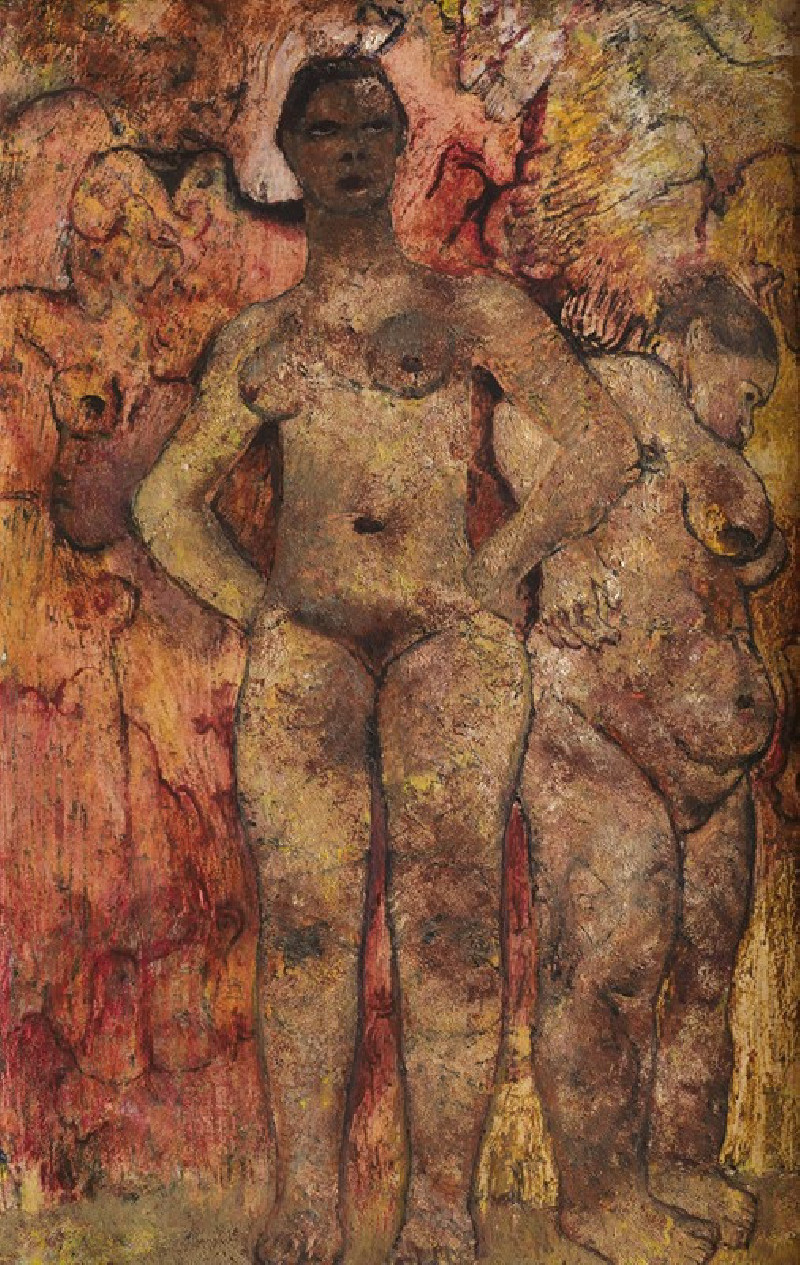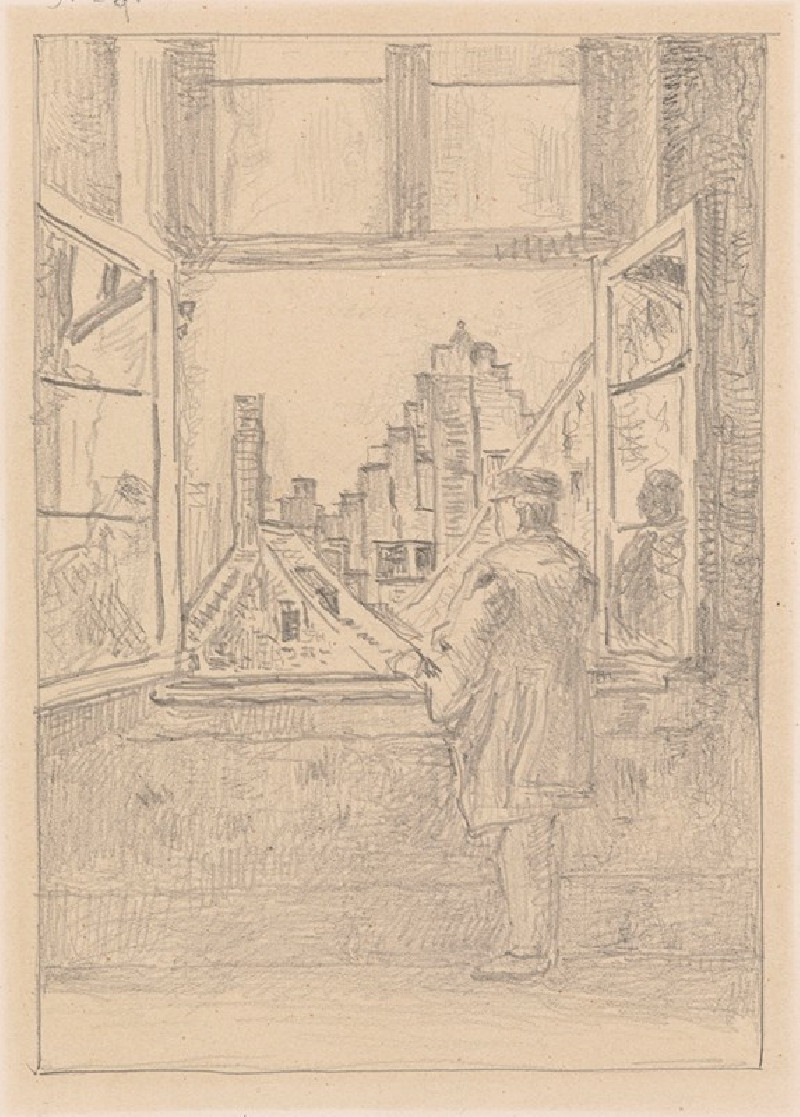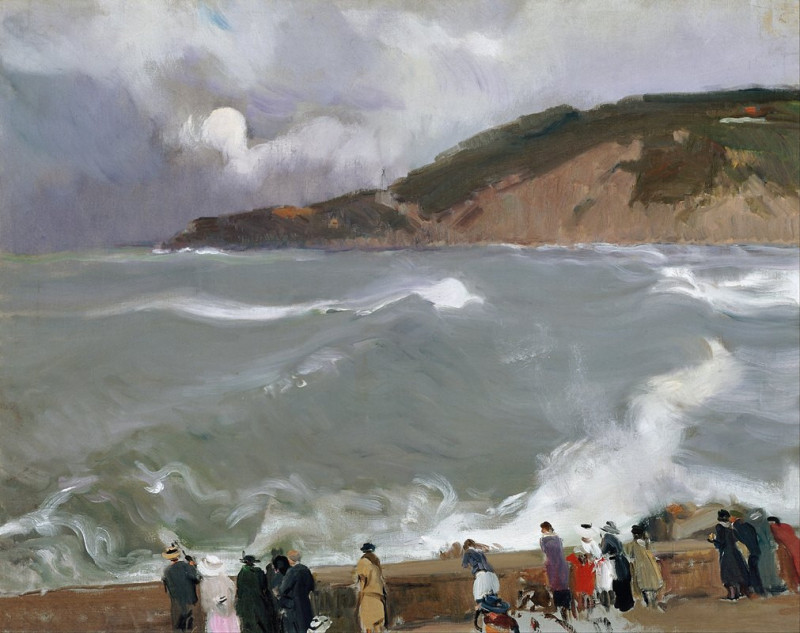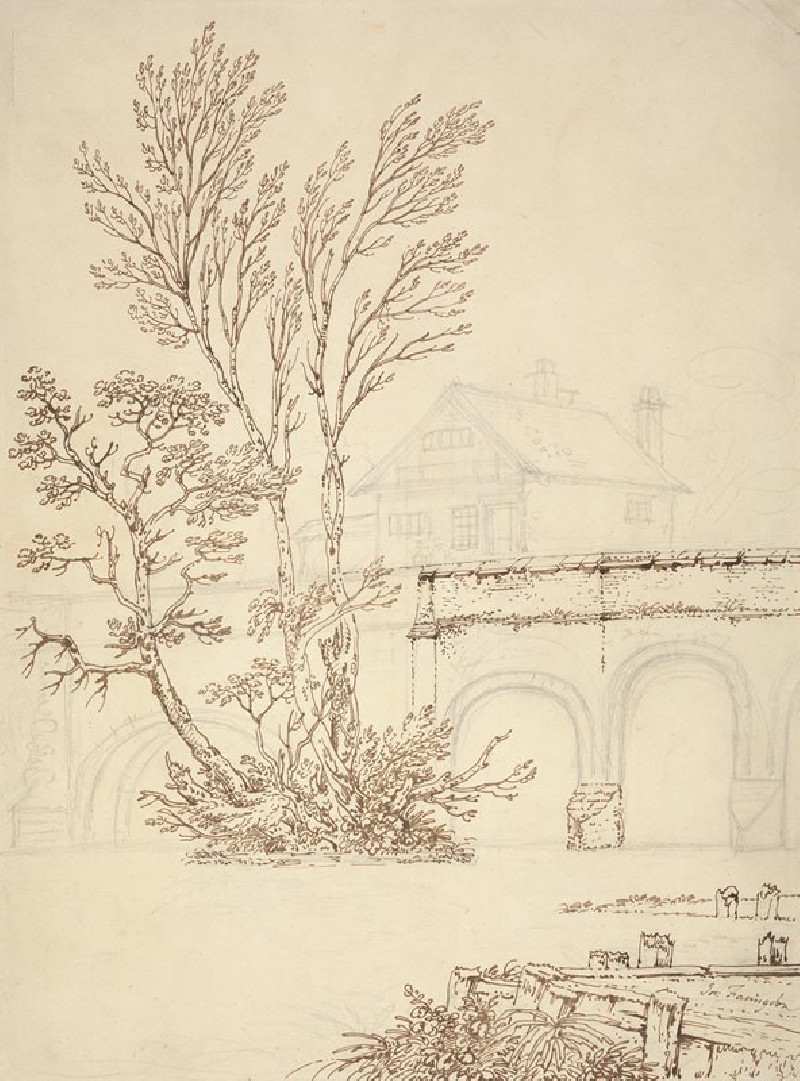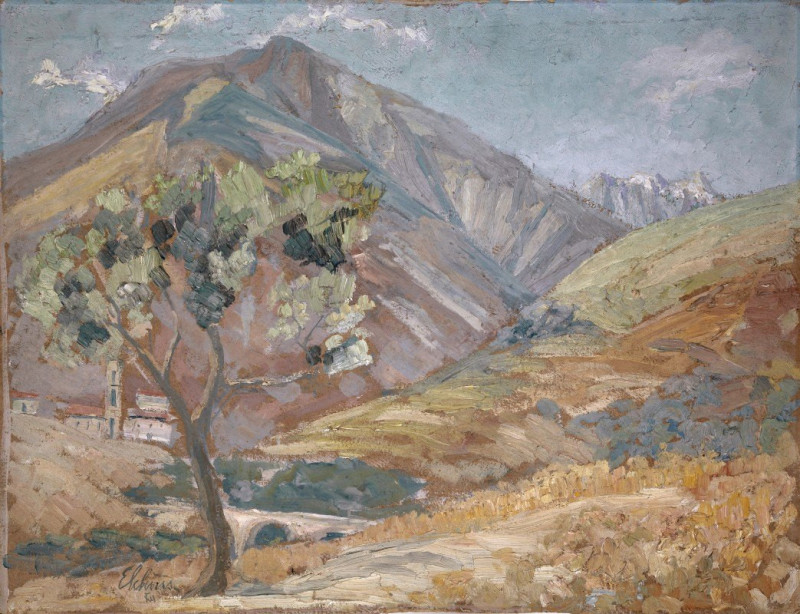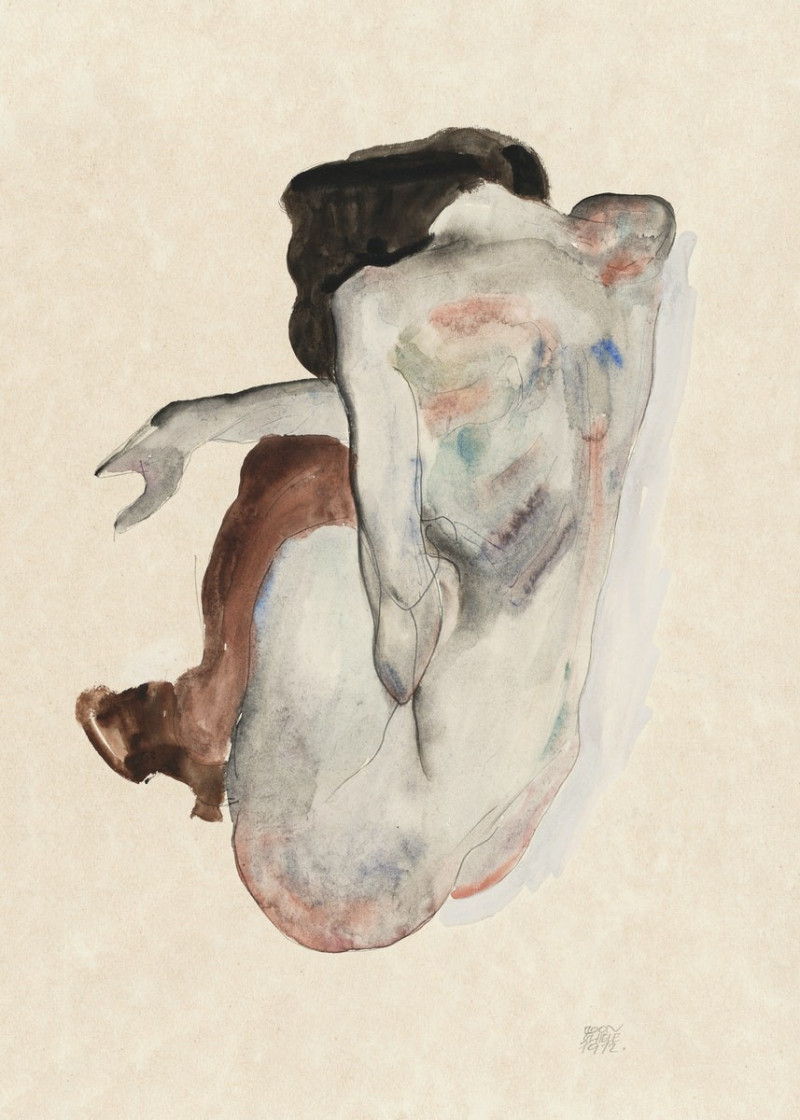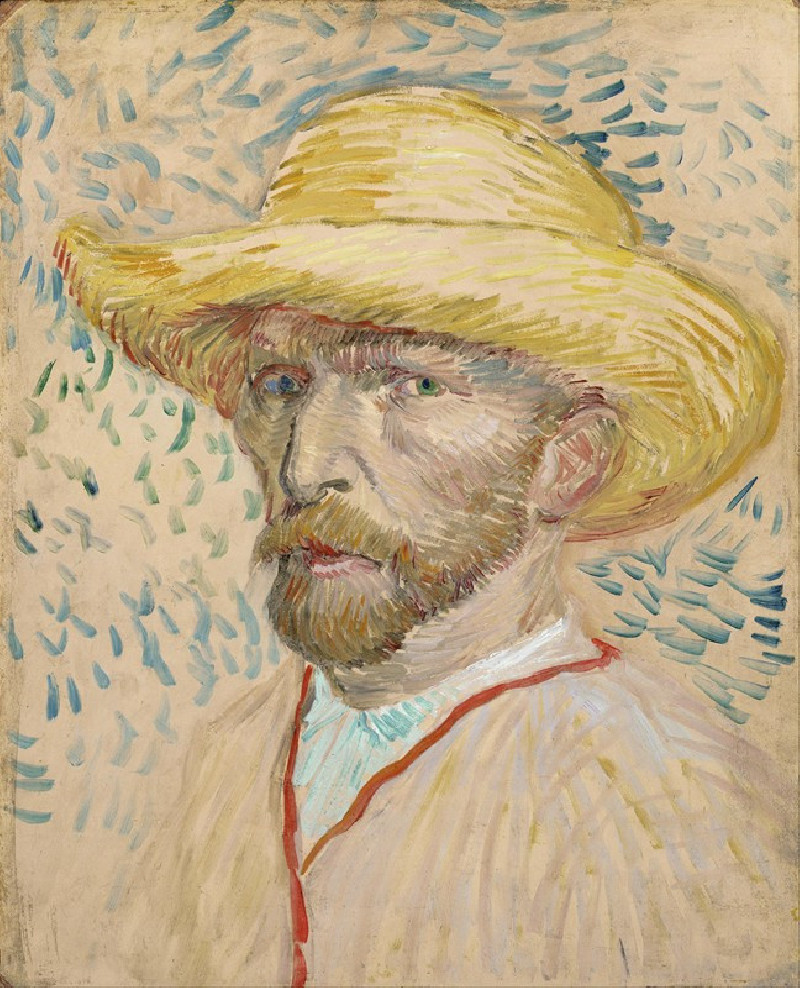L’Arbre En Fleur (1893)
Technique: Giclée quality print
Recommended by our customers
More about this artwork
Titled "L’Arbre En Fleur" (The Tree in Bloom), this enchanting painting by Achille Laugé, crafted in 1893, encapsulates the delicate beauty of nature through a blooming tree. In the artwork, the central focus is a vibrantly flowering tree, its branches lavishly covered in white blossoms that almost seem to shimmer against the lush, textured blue background of the sky. Below, the ground is speckled with a mix of warm and cool tones, suggesting the vibrant life found on a thriving meadow.In the backdrop, we can discern a quaint house partially obscured by the rich foliage, adding a hint of human presence without disturbing the tranquility of the scene. Laugé employs a technique reminiscent of pointillism, where small, distinct dots of color are applied in patterns to form an image. This technique imparts a dynamic quality to the surface, making it sparkle with vitality."L’Arbre En Fleur" is more than just a visual treat; it is a ceremonial homage to the beguiling simplicity of the countryside.
Delivery
Returns
The painter Achille Laugé (1861-1944) was born in Arzens, France. After studying at the famous art academies of the time, the artist followed his own unique path in the Neo-Impressionist movement, always remaining deeply attached to his native region of Occitania. Laugé never followed the methods and advice of his teachers, and his work was considered radical for his time.


